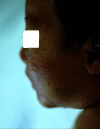Dermatology: how to manage acne vulgaris
- PMID: 34691199
- PMCID: PMC8510514
- DOI: 10.7573/dic.2021-8-6
Dermatology: how to manage acne vulgaris
Abstract
Background: Acne vulgaris is the most common skin disease that can lead to disfigurement and psychological distress. This article aims to provide a narrative updated review on the management of acne vulgaris.
Methods: A PubMed search was performed with Clinical Queries using the key term "acne". The search strategy included clinical trials, meta-analyses, randomized controlled trials, observational studies and reviews. The search was restricted to articles published in English.
Results: Treatments of acne include proper skin care, topical medications, oral medications and procedural therapies. Topical agents are the first-line treatment for mild-to-moderate acne and can be used as combination therapy for more severe acne. Systemic therapies are usually prescribed for the initial treatment of moderate-to-severe acne as well as for acne that is refractory to topical therapies.
Conclusion: Topical retinoids are the drugs of choice for the treatment and maintenance therapy of patients with mild-to-moderate acne vulgaris. Depending on the severity of the acne, topical retinoids may be used alone or in combination with benzoyl peroxide and topical or oral antibiotics. Oral antibiotics are an important therapy for inflammatory acne unresponsive to topical therapy. Neither topical nor oral antibiotics should be used as monotherapy. Oral contraceptives and/or spironolactone are useful for many women with acne. Oral isotretinoin is the drug of choice for severe, extensive, nodular acne vulgaris but is also often used in moderate cases where scarring is evident, acne-related psychosocial distress is significant or other treatment modalities have failed.
Keywords: acne; antibiotics; benzoyl peroxide; comedones; erythematous papules; oral contraceptives; pustules; retinoids; spironolactone.
Copyright © 2021 Leung AKC, Barankin B, Lam JM, Leong KF, Hon KL.
Conflict of interest statement
Disclosure and potential conflicts of interest: AKCL and KLH are associate editors of Drugs in Context and confirm that this article has no other conflicts of interest otherwise. This manuscript was sent out for independent peer review. All authors declare that they have no conflicts of interest relevant to this manuscript. The International Committee of Medical Journal Editors (ICMJE) Potential Conflicts of Interests form for the authors is available for download at: https://www.drugsincontext.com/wp-content/uploads/2021/09/dic.2021-8-6-COI.pdf
Figures















References
-
- Leung AK. Acne. In: Leung AK, editor. Common Problems in Ambulatory Pediatrics: Specific Clinical Problems. Vol. 2. New York: Nova Science Publishers, Inc; 2011.
Publication types
LinkOut - more resources
Full Text Sources

